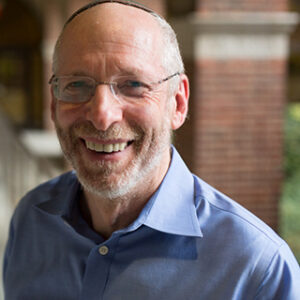
Repentence and the Mystical ‘Rope’: The Divine/Human Relationship in Jewish Thought
Sep 16, 2024 By Shira Billet | Public Event video | Video Lecture | Rosh Hashanah | Yom Kippur
One of the most striking images of the divine-human relationship in Jewish thought is the kabbalistic image of a rope or cord that extends from God in the heavens into the soul of the human being. We explore a diverse array of Jewish thinkers over the centuries who have found this metaphor meaningful, especially in times of challenge and suffering, giving them hope to continue to strive to become closer to God. In the context of the High Holiday season, we give special attention to connections between this metaphor and themes and liturgies of the High Holiday season.
Read More
More Than the Motions
Oct 13, 2024 By Joel Seltzer | Commentary | Yom Kippur
The haftarah, from Isaiah chapter 57, was chosen precisely to prevent the type of self-congratulatory behavior that we humans exhibit when we play the “dutiful child,” while simultaneously managing to miss our larger purpose.
Read More
The Esslingen Mahzor
By Library of the Jewish Theological Seminary | Rosh Hashanah | Yom Kippur
In the winter of 1290 in Esslingen, a small market town in southwest Germany, a talented Jewish scribe named Kalonimos ben Yehudah completed his one surviving credited work, The Esslingen Mahzor (MS New York 9344), the earliest-dated Hebrew book made in Germany. It is a large-format prayer book created for Rosh Hashanah, Yom Kippur, and Sukkot.
Read More
Sha‘ar Bat Rabim
Sep 16, 2024 By Library of the Jewish Theological Seminary | Rosh Hashanah | Yom Kippur
Sha‘ar Bat Rabim is an extraordinary manuscript/printed-book hybrid that vividly illustrates the concept of the “lives of books.“ This volume, originally printed in Venice, serves as a prayer book for Rosh Hashanah and Yom Kippur according to the Ashkenazic rite.
Read More
The Toledo-Constantinople Bible
By Library of the Jewish Theological Seminary | Rosh Hashanah | Yom Kippur
Like all Masoretic texts, the Toledo-Constantinople Bible (MS New York L6) includes precise Hebrew and Aramaic text, vocalization, and accents of the 24 books of the Hebrew canon. The colophon[1] of this Bible reveals a statement of profound resilience.
Read More
Petition or Protest
Aug 30, 2024 By Adam Zagoria-Moffet | Commentary | Re'eh | Rosh Hashanah | Yom Kippur
Our Sages saw Hannah as trying to trap God into offering blessing, and they interpreted the same from another unlikely context, one that also occurs during this month’s Torah readings. We read about the apparently bizarre mitzvah of shilu’ah haken, the sending away of the mother bird. Deut. 22:6–7 is the sole description of this shockingly precise mitzvah: “If you happen upon a bird’s nest while on the road, whether in a tree or on the ground, whether with chicks in it or still-unhatched eggs, and the mother bird is sitting on the eggs or chicks, you shall not take the mother with the young. Instead, chase away the mother bird and take the young—in order that you be well and your days long.”
Read More
JTS High Holiday Webinars 2024
Prepare for 5785 with three meaningful, enriching sessions.
Read More
The Yom Kippur Avodah as a Template for Spiritual Practice
Sep 19, 2023 By Eliezer B. Diamond | Public Event video | Video Lecture | Yom Kippur
It is generally thought that the Yom Kippur Haftarah taken from Isaiah is supposed to be read as being in tension with the Torah reading from Aharei Mot (Leviticus 16). While the Torah reading focuses almost exclusively on the rites performed by the High Priest in the Temple on Yom Kippur, Isaiah declaims that the ritual piety without social justice and Shabbat observance is nothing more than worthless hypocrisy.
While this observation has merit, it can encourage the view that ritual has no ethical or spiritual content. In this session we see that the Avodah, the Temple rites, can indeed serve as a model for a life of spiritual discipline.
Read More


